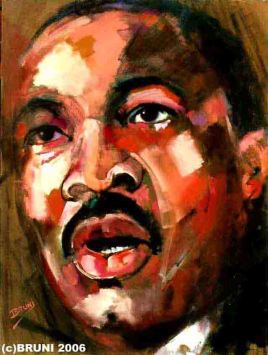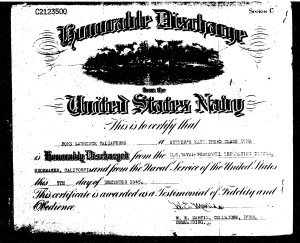 My maternal grandmother was Julia Ann GATES. She was born in Woodbury, Meriwether, GA, to Jack GATES and Georgia Ann THOMPSON, on 30 April 1894. She died on 4 January 1970, in Warm Springs, Meriwether, GA (a few days after the death of my father). It was strange to lose two people of such close blood kinship to me yet I never knew one, and had only a distant relationship with the other.
My maternal grandmother was Julia Ann GATES. She was born in Woodbury, Meriwether, GA, to Jack GATES and Georgia Ann THOMPSON, on 30 April 1894. She died on 4 January 1970, in Warm Springs, Meriwether, GA (a few days after the death of my father). It was strange to lose two people of such close blood kinship to me yet I never knew one, and had only a distant relationship with the other.
Initially, I thought I’d have very little to write about for this 2nd edition of the CoAAG – Grandma’s Hand; Grandmothers and Their Influence On The Family. I’m the host, and I chose the theme, yet I had no memories to pull from; no words of wisdom or gems to live by from my grandmother. I did not know my grandmother; not in the very personal way that you think of a grandmother/ granddaughter relationship. Honestly, I am deeply saddened by that fact. I thought, “What in the world can I write about? What can I say?” I thought long, and I thought hard. Then I waited, and waited for the memories to come. As a good friend had advised….I waited for my grandmother to speak to me, to show me how to tell her story. Then I realized I did have memories, very vivid memories of several trips down to Woodbury, GA to visit my grandmother. In my memories of those visits are the memories of my grandmother. So, travel with me to Woodbury, GA and meet my grandmother Julia Ann GATES…the way I remember her.
When I was young, my mom and I would take the bus from Atlanta to Woodbury to visit my grandmother. Not often. In fact, I only remember doing that two times. After we got off the bus in town, we had to walk the rest of the way. I remember on the walk to my grandmother’s house we would pass a big white house that sat way back from the road on the left. That is where my grandmother worked as a cook. We would stop there first, and go to the back door to the kitchen where my grandmother was cooking. We never stayed long, just a brief stop, and I always wondered why we had to hurry. I was recently told by a cousin that the “big white house” as I called it was the hotel. The briefness of the visit makes sense now, but it didn’t then. It was not a long walk to my grandmother’s house, but not a short one either. After we crossed the railroad tracks, the road turned to dirt; red dirt, Georgia red clay my mom would say. The next landmark I remember is the old white church on the right. My mother and her brothers went to school in that church. Turn right at the church; that’s what my young mind would say as we walked along; for some reason I was always afraid we would get lost. We walked; sometimes fast, sometimes slow, but always with a sense of purpose…heading to my grandmother’s house. As I think about it now, there was no feeling of happiness or excitement as you would expect on a visit to your grandmother’s.
My grandmother’s house was not far down the road across from an endless field of what I called “white stuff” that was actually cotton. My mom said everybody in our family had picked cotton in that field. It was many years later before I could digest the meaning and significance of that bit of family history. My grandmother’s house was just three rooms. It seemed pretty small when compared to the endless fields of cotton and corn that stretched for miles on either side. I think they called it a shotgun house, because, I was told, you could stand at the front door and shoot straight through the house and out the back door. I guess that was true because from the front door you could look straight down a short hallway to the back door, and outside if the door was open. Silly me, I kept asking “where was the shotgun?”
Once inside, I felt warm and comfortable, a little scared, but safe. Was that the comfort of a grandmother? The feeling I long for today, but can’t quite grasp. There was a bedroom to the right with a beautiful pink bedspread that had lots of flowers; it was shiny, and felt like silk. (I think my grandmother gave me that bedspread, and I still have it somewhere; got to find it). I remember pictures, and other stuff…I wonder what happened to all of it.
To the left was another bigger room with two beds; one along the wall to the right as you entered the door, and another bigger one across from that by the window. That’s where we all slept; in that room with the big fireplace, and lamps that used kerosene. Seems there was also a lot of stuff in that room too; pictures, papers maybe, little things collected during a life of living life. What happened to all my grandmother’s stuff after she died? I wish I had some of it to help me remember her.
The room had an iron railed headboard, and seems I just sank right down in the middle of the bed because it was “a feather mattress” my grandma said. You could feel the memories in that room; decades of my family history. My mom said that once there was a tornado and after it was over the roof was gone, and her brother’s head was trapped between two of those rails in that headboard. (That would be my uncle – Alexander “AJ” MIDDLEBROOKS.) That was sooooo funny to me, and we laughed and laughed…me, my mom, and my grandma. But, after that I was scared to sleep in that bed. Just in case there was another tornado, you understand, right? But, I finally did fall asleep; sunk down in the middle of the feather mattress with my mom and grandma close by, the warmth of the fire from the fireplace, and the kerosene lamp that bathed the room in a soft golden glow.
The kitchen had iron stove, a table, and another bed along the back near the door. There was always food, and the stove was warm from cooking. I woke up to the smell of country ham and fresh biscuits with homemade preserves for breakfast. It must have been my grandma who did all that…taking care of me and my mama on our visit just like grandmothers do. My grandmother sometimes brought food home from the hotel but, if not she always made me fried chicken, biscuits and apple pie. I never actually saw her cooking it, but it was always there still warm and fresh.
In the back down a long path was an outhouse. Oh boy, do I remember that. Now, thinking back I know this was the main reason I was so apprehensive on these visits. There was no way I could hold “it” till we got back to Atlanta, but also nooooooo way I was going out there. So my grandmother made “other arrangements” for me. I will always remember that she told my mom, “Lillian, that girl don’t have to go out there if she don’t want to.” AND I DID NOT!! Every time I think about that I laugh and laugh; it’s pretty funny now, but it sure wasn’t funny then.
Yes, I remember all those things about my grandmother; they are the things that made her who she was and is to me.
I remember that my grandmother came home late, and left out early the next morning going back to work. I remember her being tired and talking about her legs aching, and not being able to do that work much longer. I remember her being sick and in the hospital; diabetes and something about her legs…bad veins and blood clots. I remember my mama going to her funeral without me. I remember feeling sad, but not shedding a tear.
I remember all these “things” about my grandmother, but I don’t remember feeling her in my heart…not until today.
 On Wednesday January 15th, 2014 the world will pause in observance of Dr. Martin Luther King Jr.’s 85th birthday.
On Wednesday January 15th, 2014 the world will pause in observance of Dr. Martin Luther King Jr.’s 85th birthday.





